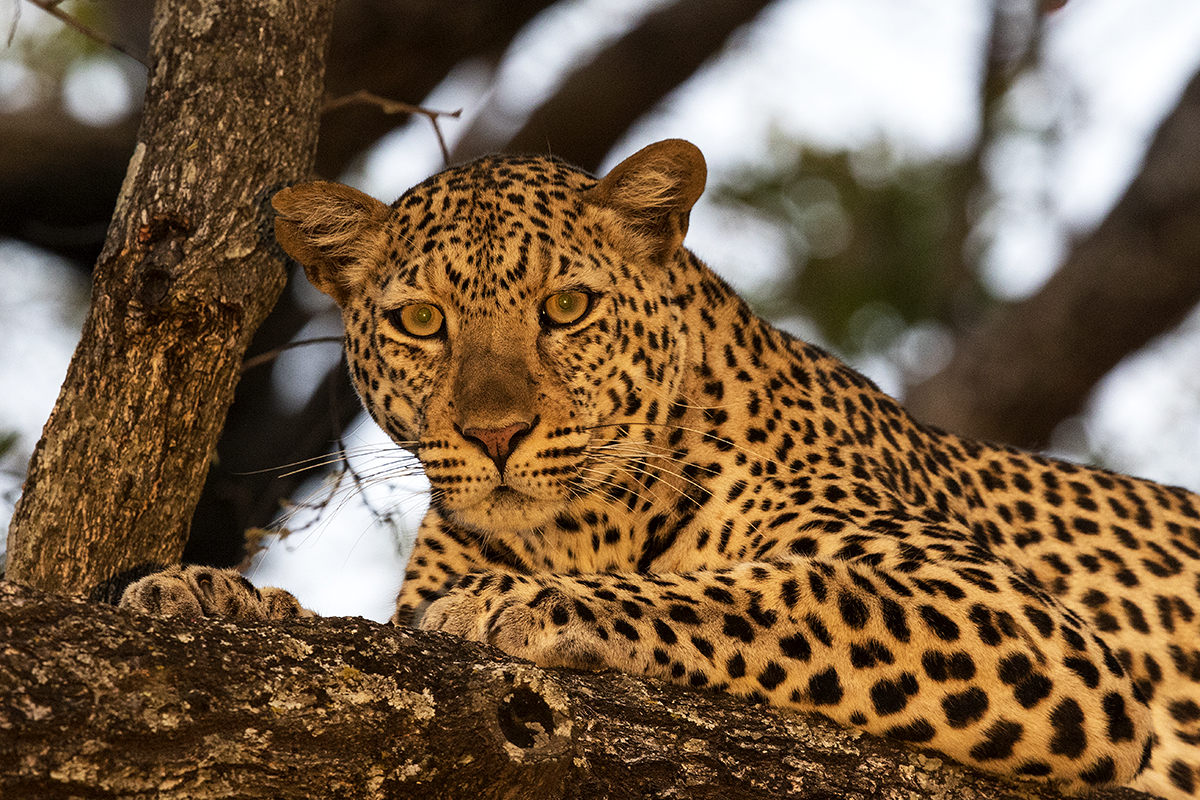
Leopard population densities in the Serengeti National Park in Tanzania are comparable to those in other large protected areas, researchers found. The scientists used camera-trap data from the Snapshot Serengeti project.
Photo by Michael Jeffords and Sue Post*

A camera-trap caught this picture of a leopard in Serengeti National Park in Tanzania.
Photo courtesy Snapshot Serengeti
CHAMPAIGN, Ill. — A study of camera-trap data from Serengeti National Park in Tanzania found that leopard population densities in the 3.7-million-acre park are similar to those in other protected areas but vary between wet and dry seasons. The fluctuations appear to be driven by the abundance of prey and how this affects interactions with other large carnivores like lions, researchers report.
Despite the long history of wildlife research in the Serengeti, this is the first peer-reviewed study of leopard densities in the park, said Max Allen, a carnivore ecologist with the Illinois Natural History Survey at the University of Illinois, Urbana Champaign who led the research. Allen and his team analyzed data from Snapshot Serengeti, a large collaborative effort that uses hundreds of camera traps to collect data on large cats and other wildlife in the Serengeti. The team published the new findings in the journal Biodiversity and Conservation.
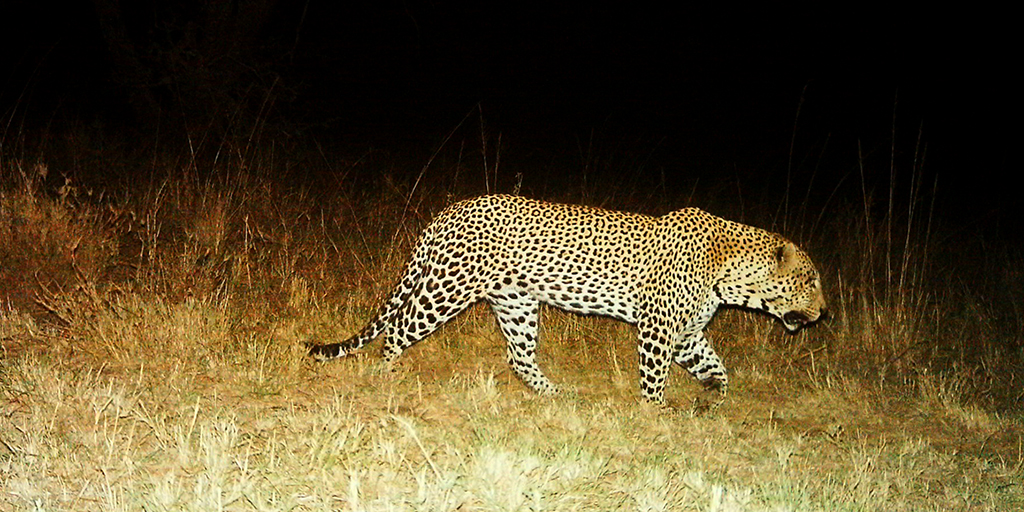
Leopards hunt in darkness and in daylight. This leopard was captured by a camera trap in the Serengeti at night.
Photo courtesy Snapshot Serengeti
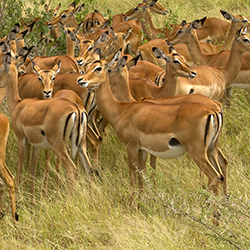
Impalas and other potential leopard prey are more plentiful in the rainy season in Serengeti National Park. Leopard population densities in the park also increase at this time of year, a new study found.
Photo by Michael Jeffords and Sue Post*
"In the wet season, when potential prey species like Thomson's gazelle and impala are available in abundance, leopards appear at higher densities," Allen said. "In the dry season, leopards seem to work harder to avoid other large carnivores that compete with them for less abundant food."
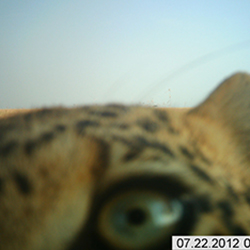
A camera trap in the Snapshot Serengeti project captured the attention of a curious cat.
Photo courtesy Snapshot Serengeti
The team used advanced analytical techniques called Bayesian statistics to estimate leopard densities for each camera-trap site and for the study area overall.
"We found 5.72 and 5.41 leopards per 100-square-kilometers in the wet and dry seasons, respectively," Allen said. "These densities suggest the leopard populations are at moderately healthy levels in the Serengeti. This reflects the importance of large conservation areas for large carnivores, as leopard populations are generally declining across their range."
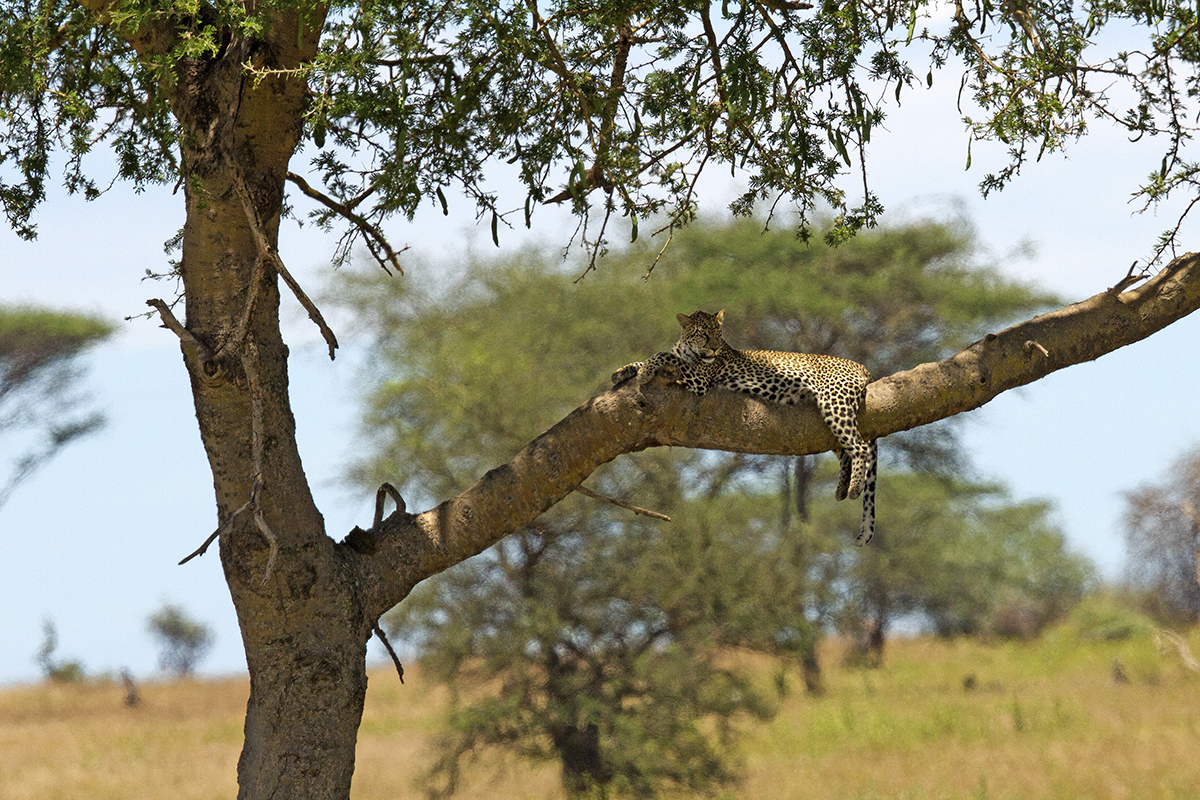
Leopards in the Serengeti try to avoid interacting with lions and other top predators during the dry season, when prey is less abundant.
Photo by Michael Jeffords and Sue Post*
The results also highlight the importance of citizen-scientist projects for the conservation of wild species, Allen said. Snapshot Africa is one of the most effective citizen science projects in the world, he said.
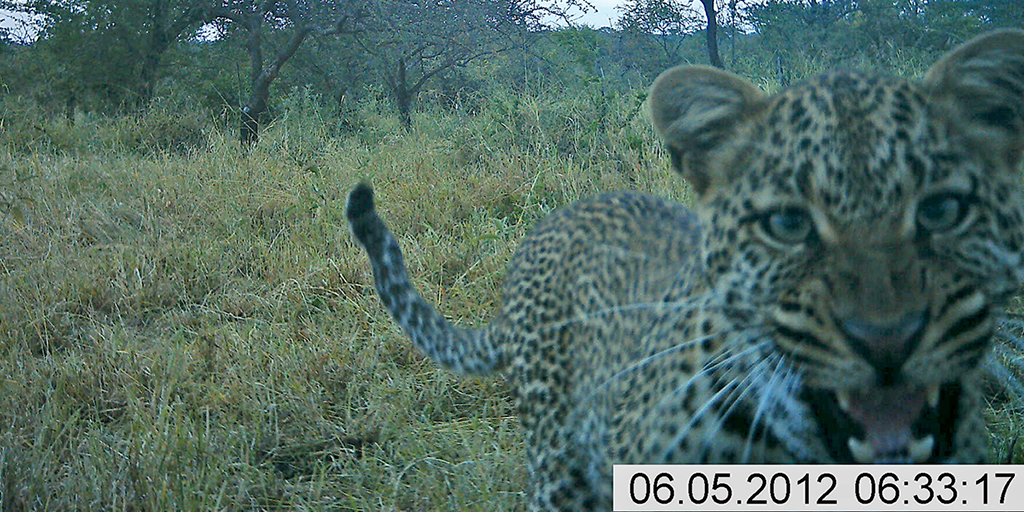
The densities of leopard populations in the Serengeti are similar to those in other large protected wildlife areas in Africa, researchers found.
Photo courtesy Snapshot Serengeti
"Large carnivores at the top of the food chain play important roles in ecosystem regulation, and disease and population control," Allen said. "The human-induced changes to habitat availability and quality are accelerating the decline of large carnivores, which are already vulnerable because they have naturally low population densities at birth."
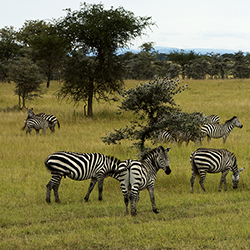
The Serengeti National Park in Tanzania offers 3.7 million acres of protected habitat for wildlife.
Photo by Michael Jeffords and Sue Post*
Understanding how carnivore populations are faring and what factors contribute to their success is essential to conserving them and the other wildlife in their ecosystem, Allen said. Capturing data about their habits through unobtrusive camera traps can lead to better management of the wild areas on which they depend.
The INHS is a division of the Prairie Research Institute at the U. of I. The INHS, U. of I. and Slovenian Research Agency supported this research.






